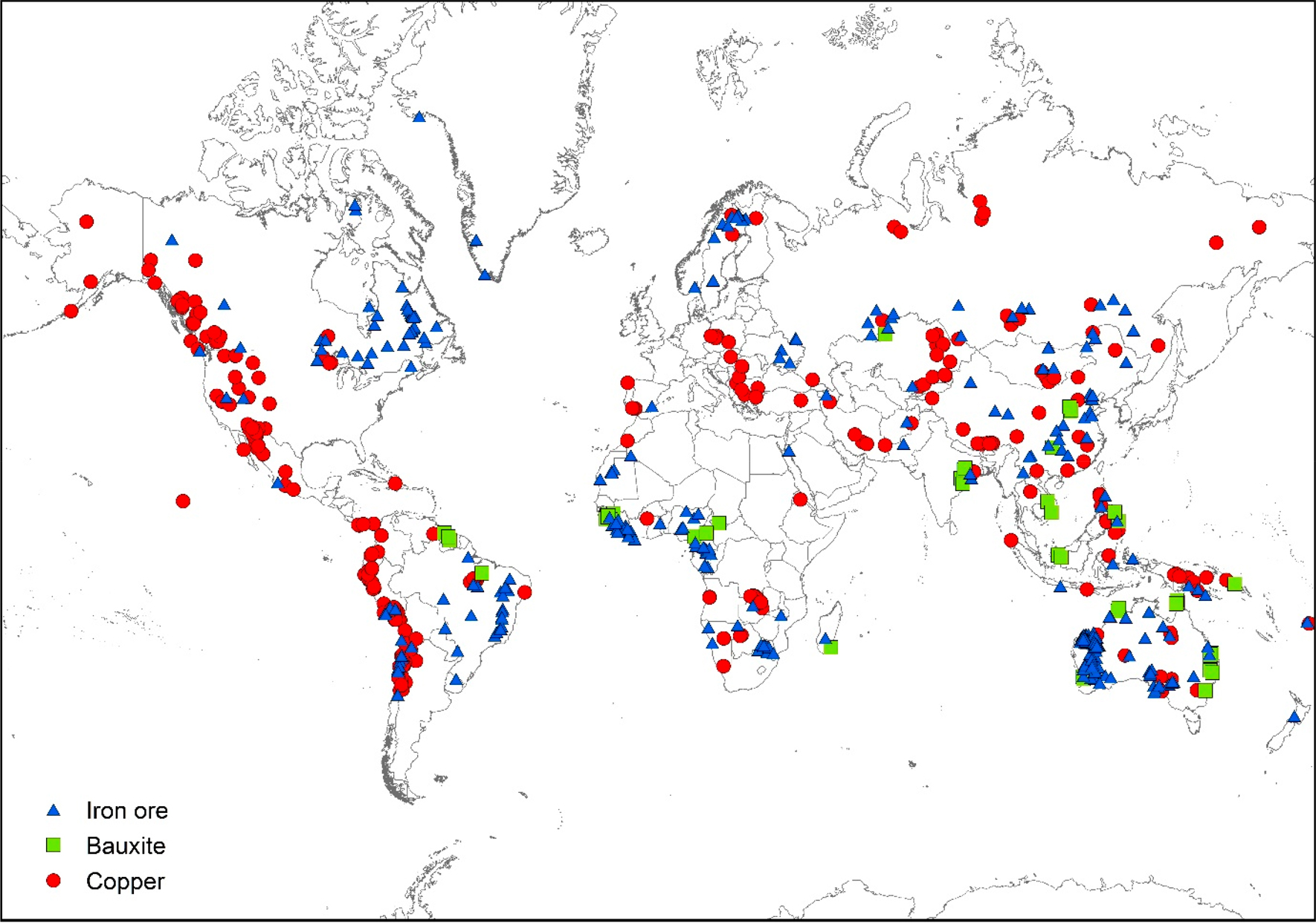
The effects environmental, social and governance (ESG) risks will have on the global supply of metals without major innovations in the mining industry have been highlighted by University of Queensland researchers.
Researchers from UQ’s Sustainable Minerals Institute (SMI) designed a matrix to assess the ESG context of more than 600 individual copper, iron and bauxite orebodies and then analysed how it may affect global supply.
SMI’s Dr Eléonore Lèbre, said the findings demonstrate that ESG challenges have the potential to significantly impact the global supply of metals.
“The majority of the 296 copper orebodies, 324 iron orebodies and 50 bauxite orebodies we examined are in complex ESG contexts which could either prevent, delay or disrupt mining operations,” Dr Lèbre said.
“This has major implications for the mining industry, investors, governments, and downstream users of metals, who will all become dependent on access to these complex orebodies.
“Iron, copper and bauxite – the main source of aluminium – are already the three most widely used metals in the world, representing 95 per cent of all industrial metals produced annually, but demand is expected to double, if not triple, by 2050.
“Even now numerous mining projects stall or are abandoned due to materialised ESG risk, so it will become more frequent if there isn’t major innovation in project design and development.“
The study was produced by SMI’s Complex Orebodies Research Program, which focuses on ‘unlocking’ orebodies necessary to meet future demand, but unviable due to low grades, technical challenges, political unrest, social outrage, or environmental barriers.

SMI Complex Orebodies program leader Professor Rick Valenta said the researchers judged each orebody against eight risks: waste, water, biodiversity, land uses, indigenous peoples, social vulnerability, political fragility, and approval and permitting.
“When more than one risk category is identified in an orebody, it gives us a clue that accessing that orebody may be complex,” Professor Valenta said.
“It’s also notable that each of the three metals vary in their risks because they are being mined in different areas of the globe and in different orebody types.
“Iron orebodies show a mix of low and high risks, with the high risk orebodies generally characterized by social vulnerability, political fragility, and approval and permitting challenges.
“Almost all the bauxite orebodies we studied are located in high risk contexts, making it the highest risk of the three commodities.
“Copper orebodies are more evenly distributed but water and waste risks are prevalent, with 65 per cent of orebodies located in regions with medium to extremely high water risk.
“Our intention is for this methodology to be used by a range of stakeholders, such as governments at the approval stage of new mining projects, and by investors or multinational mining companies.”
The research, Source Risks As Constraints to Future Metal Supply, is published in Environmental Science and Technology. (https://doi.org/10.1021/acs.est.9b02808)
Media: Dr Eleonore Lebre, e.lebre@uq.edu.au, +61 7 3346 4137; SMI Communications, Connor Pound, c.pound@uq.edu.au, +61 (0) 447 812 081.



